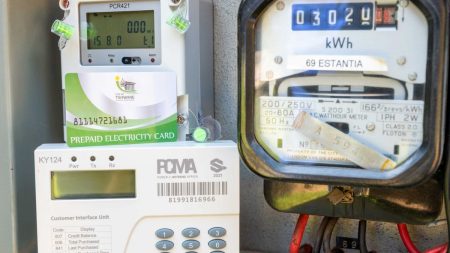Load shedding and load reduction are terms commonly used in the context of electricity management, particularly when there is a shortage of power supply. While both involve efforts to manage electricity usage, they are distinct processes with different methods, impacts, and objectives. Understanding the difference between these two terms is important for both consumers and energy providers in managing power outages and ensuring the stability of the electricity grid.
1. Load Shedding:
Load shedding refers to a deliberate, controlled interruption of the power supply to different areas or sectors in order to balance demand and supply. It is typically implemented when the power generation capacity is insufficient to meet the demand for electricity, resulting in grid instability. Load shedding is often scheduled in advance, and affected areas are rotated to minimize the impact on consumers.
Key Characteristics of Load Shedding:
- Power Cuts: Scheduled or unscheduled disconnections of electricity to specific areas.
- Cause: Occurs due to a shortage of electricity supply, often from power plants, grid issues, or extreme weather events.
- Duration: Can last for several hours, depending on the extent of the power shortage.
- Frequency: May occur daily, weekly, or during peak demand times, depending on the severity of the shortage.
- Impacts: Affects daily life, business operations, and can disrupt essential services like hospitals and emergency services.
- Implementation: Typically managed by the national or regional energy authorities, such as power utilities, which create schedules to rotate power cuts across areas.
Common Causes of Load Shedding:
- Insufficient Power Generation: Lack of capacity to meet peak demand, especially in times of high energy consumption.
- Generation Failures: Equipment breakdowns, failures in power plants, or issues in renewable energy sources (e.g., wind or solar variability).
- Transmission Constraints: Damage to the transmission grid infrastructure, making it difficult to deliver power to all areas.
- Fuel Shortages: In some cases, there is a shortage of fuel (e.g., coal, gas) required for power generation.
Table: Load Shedding Impact
| Aspect | Load Shedding |
|---|---|
| Duration | Several hours, scheduled |
| Cause | Insufficient power supply |
| Frequency | Can occur daily or during peak times |
| Affected Areas | Rotational power cuts to various areas |
| Impact | Interrupts daily activities, disrupts businesses |
| Control | Managed by national/regional power authorities |
2. Load Reduction:
Load reduction, on the other hand, involves efforts to reduce the overall demand for electricity to prevent or alleviate strain on the grid. Unlike load shedding, where power is actively cut off, load reduction typically focuses on voluntary or incentivized measures to lower consumption. This can include actions like turning off non-essential electrical devices, reducing usage during peak hours, or adopting energy-efficient technologies.
Key Characteristics of Load Reduction:
- Demand Control: Aimed at reducing electricity consumption to avoid reaching critical levels of demand that may require load shedding.
- Cause: Often used to prevent power shortages before they happen, especially during periods of high demand.
- Duration: Typically short-term, such as reducing consumption during specific hours of the day (e.g., peak hours).
- Frequency: Used in response to energy forecasts or real-time grid conditions.
- Impacts: Generally less disruptive to daily life compared to load shedding, but still requires changes in behavior.
Methods of Load Reduction:
- Peak Demand Reduction: Consumers are encouraged to reduce their usage during specific times when demand is highest.
- Energy Efficiency Programs: Incentives for consumers to adopt energy-saving devices, technologies, and appliances.
- Demand Response Programs: Consumers or businesses voluntarily reduce or shift their electricity use in response to price signals or requests from grid operators.
- Public Awareness: Campaigns to educate consumers on how to reduce electricity usage and save on energy bills.
Table: Load Reduction Strategies
| Strategy | Description |
|---|---|
| Peak Demand Shifting | Reduce electricity usage during peak demand hours |
| Energy Efficiency | Use of energy-efficient appliances and technologies |
| Demand Response | Consumers reduce consumption in response to price signals |
| Public Education | Informing consumers on ways to reduce electricity usage |
3. Key Differences Between Load Shedding and Load Reduction:
| Aspect | Load Shedding | Load Reduction |
|---|---|---|
| Definition | Controlled power cuts to balance demand and supply | Measures to reduce electricity consumption |
| Cause | Insufficient power supply or grid overload | High demand or grid stress |
| Impact | Disrupts power to specific areas, can cause significant inconvenience | Aimed at reducing overall consumption, minimal disruption |
| Duration | Hours or as long as the shortage persists | Short-term, typically hours |
| Management | Managed by energy authorities (e.g., power utilities) | Managed through consumer behavior and incentives |
| Frequency | Occurs when power generation falls short of demand | Occurs when high demand is predicted or real-time adjustments are needed |
While both load shedding and load reduction are tools used to manage electricity supply and demand, they serve different purposes and involve different methods of implementation. Load shedding is a reactive measure taken when there is insufficient power to meet demand, while load reduction is a proactive approach to managing energy consumption.
Consumers can help prevent load shedding by participating in load reduction efforts, conserving energy, and reducing demand during peak times. Understanding these concepts can lead to more efficient energy use, which benefits both the individual consumer and the broader power grid system.
In the long term, implementing energy-efficient practices, supporting renewable energy, and advancing grid infrastructure will help reduce the need for both load shedding and load reduction, ensuring a more stable and sustainable energy future.
Check also: Top 5 Load Shedding Notifier Apps to Keep You Informed










